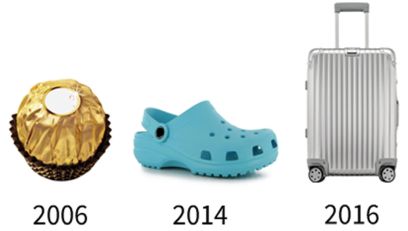LEGO Group announced recently a favorable decision issued in September 2017 by the Shantou Intermediate People's Court, a second tier city in China. LEGO Group succeeded for the first time in China to win an anti-unfair competition case in relation to the packaging of the LEGO Friends series.
Despite not written in the several comments and congrats-articles I have read, I implied that the legal ground used by the Chinese Court was art. 5.2 Anti-Unfair Competition Law (AUCL 1993 version). And then I decided to write this note to clarify why LEGO vs BELA might be interesting to all of us (and not only to LEGO Group).
Art. 5.2 AUCL 1993 reads as following: "An operator may not adopt the following unfair means to carry to transactions in the market and cause damage to competitors: (1) [...]; (2) using, without authorization, the name, packaging or decoration peculiar to famous goods or using a name, packaging or decoration similar to that of famous goods, so that his goods are confused with the famous goods of another person, causing buyers to mistake them for the well-known goods of the other person".
In short Art. 5.2 AUCL 1993 protects products and packaging against imitations only in the case that the product or the package is special and famous and there is likelihood of confusion with the imitative product. The path to protection designed by art.5.2 AUCL is narrow: special + famous + likelihood of confusion. And indeed very few had succeeded in the past.
See herein the previous foreign "winners". I am not using the word trademark on purpose. You might agree with me that those products shapes above are so famous (not only in China) that they do not need to be named.

Almost at the same time when the Shantou judges were examining and deciding the LEGO vs BELA case – i.e. last quarter of 2017 - the Chinese National People Congress adopted the new Anti-Unfair Competition Law that entered in force on January 1st 2018.
Art. 6 AUCL2017 replaced and art.5 AUCL1993 and the wording of the new legislative formula is the following: "A business operator shall not perform any of the following confusing acts that will enable people to mistake its products for another business's products or believe certain relations exist between its products and any business's products: 1. unauthorized use of a mark that is identical or similar to the name, packaging or decoration of another business's commodity, which has influence to a certain extent;".
The words used are different: "famous" (知名) in the 1993 version and "with certain influence" (有一定影响) in the 2017 law. Expert commenters have said that despite the change in the wording there is not the real intention to open the room to shapes/packaging other than famous.
Herein you see the packaging at issue in the LEGO vs BELA case.

Is the LEGO Friends packaging famous as the previous Ferrero Rocher, Crocs and Rimova? Or shall we conclude that LEGO vs BELA is the first application of the criterion "shape with certain influence" (instead of famous shape)?
The content of this article is intended to provide a general guide to the subject matter. Specialist advice should be sought about your specific circumstances.

